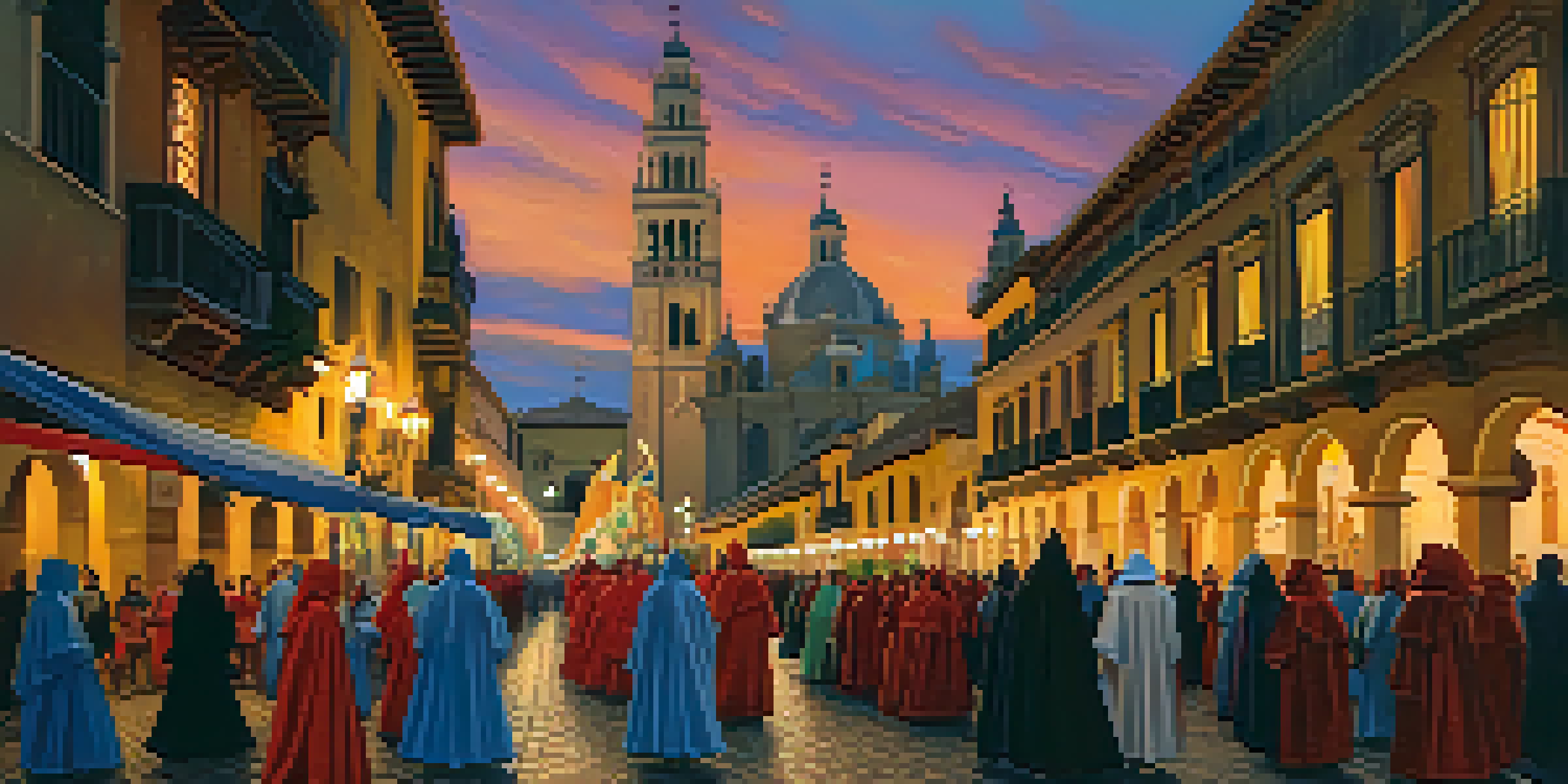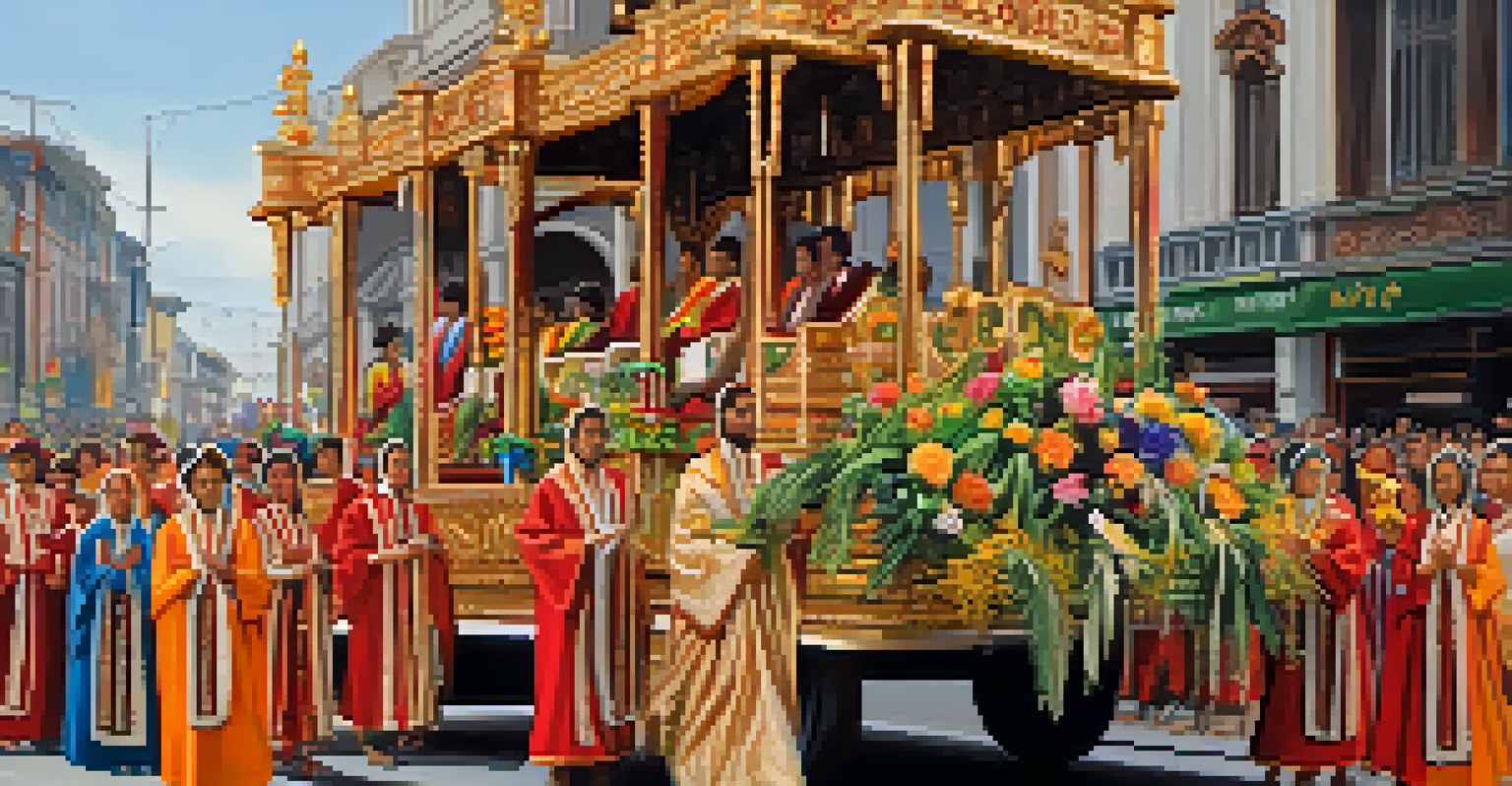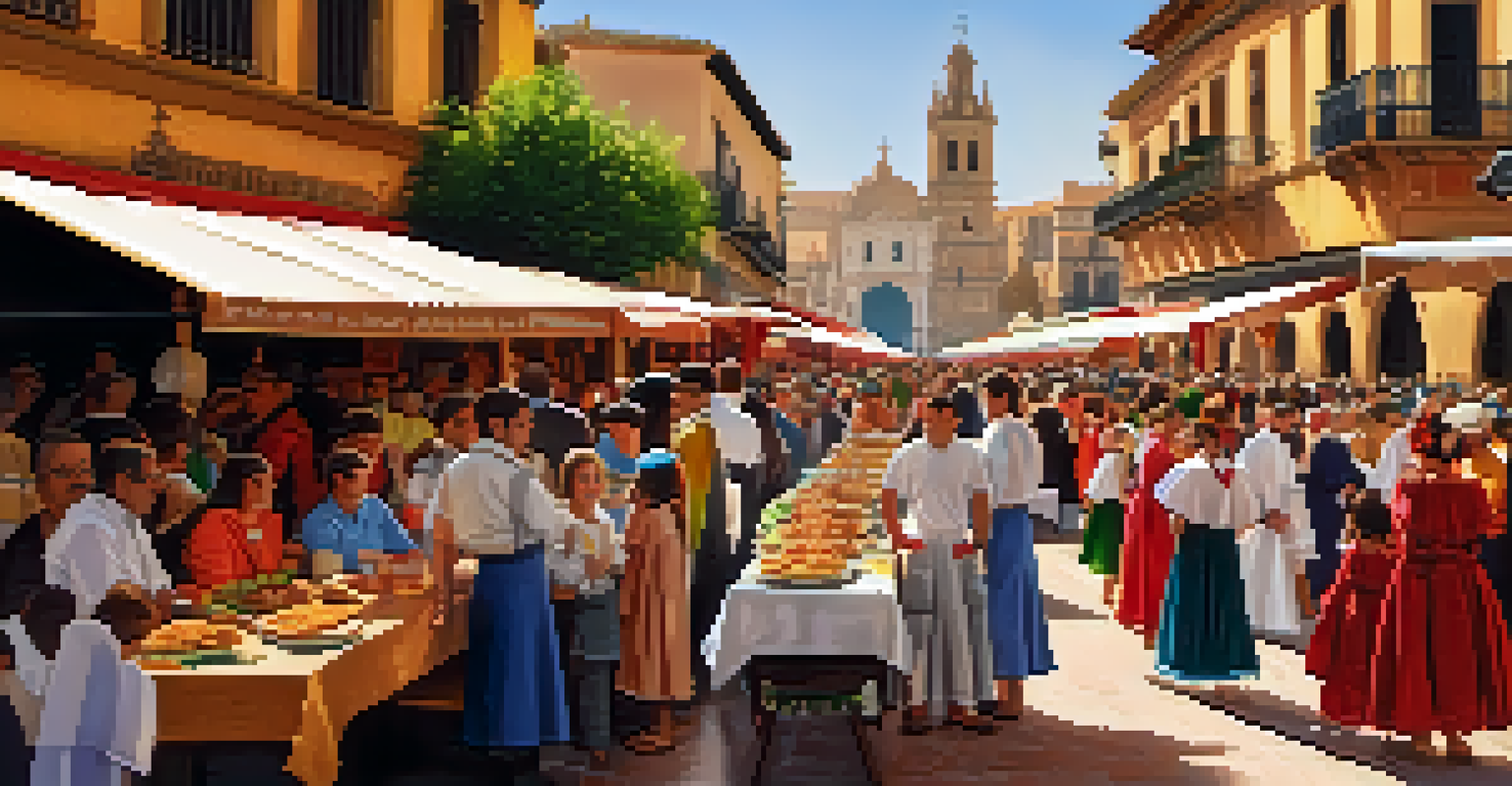Semana Santa: The Deep Religious Significance in Seville

A Brief History of Semana Santa in Seville
Semana Santa, or Holy Week, has been celebrated in Seville since the 16th century. This rich tradition combines Christian beliefs with local cultural elements, making it a unique event. Initially, it was a time for penance and reflection, allowing the faithful to connect deeply with their spirituality.
Tradition is not the worship of ashes, but the preservation of fire.
Over the centuries, it has evolved into a vibrant expression of faith, with elaborate processions and passionate devotion. The Brotherhoods, or 'Cofradías', play a crucial role, organizing the events and keeping traditions alive. Each brotherhood has its own history, contributing to the rich tapestry of Semana Santa.
Today, Semana Santa is not just a religious observance but a cultural spectacle that attracts thousands of visitors. The mix of solemnity and celebration creates an atmosphere that is both reverent and festive, embodying the heart of Seville's faith and culture.
The Spiritual Significance of Processions
The processions during Semana Santa are poignant reminders of the Passion of Christ. Each procession features beautifully adorned floats, known as 'pasos', which depict various scenes from the Passion narrative. These visuals serve as a form of storytelling, allowing participants and observers alike to reflect on the profound sacrifice of Jesus.

Participants, often dressed in traditional robes and hoods, walk in solemnity, embodying the penitential nature of the week. For many, this is a time of deep personal reflection and spiritual renewal. The slow pace of the processions invites contemplation, making it a deeply personal experience.
Rich Tradition of Semana Santa
Semana Santa in Seville is a blend of Christian beliefs and local culture, evolving from a time of penance into a vibrant celebration of faith.
Moreover, the atmosphere during these processions is electric yet serene, a juxtaposition that enhances the spiritual experience. The haunting sounds of drums and the flickering candles create a mystical setting, allowing everyone present to engage with the sacred narrative on a more profound level.
The Role of Brotherhoods in Semana Santa
The Brotherhoods, or 'Cofradías', are integral to the Semana Santa celebrations. Each brotherhood has its own unique identity, history, and specific traditions. They not only organize the processions but also ensure that the spiritual and cultural heritage of their community is preserved.
The deeper the experience, the more profound the understanding.
Members of a brotherhood often participate in years of preparation, from crafting intricate 'pasos' to rehearsing the procession routes. This commitment fosters a strong sense of community and belonging among the members, as they work together towards a common spiritual goal. It’s not just about the event; it’s about shared faith and camaraderie.
Additionally, each brotherhood serves as a social network, supporting its members and engaging with the local community. This deep-rooted connection underscores the significance of Semana Santa, as it extends beyond mere religious observance to foster a sense of unity and purpose among its participants.
Cultural Expressions During Semana Santa
Semana Santa in Seville is not only a religious event but also a cultural feast. From the stunning floral arrangements on the 'pasos' to the intricate costumes worn by the participants, every detail reflects the artistry and creativity of the community. This cultural expression showcases the town's rich history and artistic heritage.
Music also plays a pivotal role during the processions. Traditional songs, often played by local bands, resonate through the streets, adding another layer of emotion to the experience. These melodies evoke feelings of nostalgia and reverence, connecting the present with the past.
Role of Brotherhoods
The Brotherhoods, or 'Cofradías', are essential in organizing Semana Santa, preserving traditions, and fostering community spirit among participants.
Moreover, local gastronomy comes alive during this week, with special dishes and treats that reflect the season. Families gather to share meals, reinforcing bonds and traditions, making Semana Santa a holistic celebration of faith, culture, and community.
The Emotional Experience of Participants
For many, participating in Semana Santa is an emotional journey. The sense of devotion and solemnity permeates the air, creating an atmosphere where participants can express their faith openly. This emotional connection is often described as transformative, leading to a deeper understanding of one's spirituality.
Each year, participants return, sometimes feeling compelled to continue the tradition as a family legacy. The act of walking in the processions, often for hours, becomes a meditative experience, allowing them to reflect on their lives and beliefs. This shared journey fosters a sense of belonging and purpose among participants.
Witnessing the processions can also be a powerful experience for spectators. Many find themselves moved to tears, feeling the weight of the history and emotion behind each float and participant. This emotional engagement highlights the universal themes of love, sacrifice, and redemption that Semana Santa embodies.
Impact of Semana Santa on Local Community
Semana Santa significantly impacts the local community, both spiritually and economically. The influx of visitors boosts local businesses, from hotels to restaurants, providing a vital economic lift. This aspect is crucial for many small businesses that rely on tourism during this festive period.
Moreover, the event fosters a sense of pride among locals. As the city transforms into a vibrant tapestry of faith and culture, residents feel a shared sense of identity. This pride often leads to increased community engagement and volunteerism, strengthening communal bonds.
Cultural and Economic Impact
Semana Santa significantly boosts the local economy while instilling pride and community engagement among residents, ensuring the preservation of its cultural heritage.
Through workshops, educational programs, and participation in the processions, the younger generation is encouraged to embrace and continue these traditions. This transmission of cultural heritage ensures that the essence of Semana Santa remains alive for future generations, deepening its impact on the community.
The Future of Semana Santa in Seville
As society evolves, so too does Semana Santa. There is an ongoing dialogue about how to preserve the integrity of the traditions while adapting to contemporary realities. This balance is crucial to maintaining the relevance of the event in a rapidly changing world.
Innovations in technology and communication allow for greater outreach and engagement, especially among younger audiences. Social media platforms are increasingly used to share experiences and promote events, ensuring that Semana Santa reaches a broader audience beyond the local community.

The future of Semana Santa lies in its ability to remain a meaningful expression of faith and culture while embracing new ideas. By fostering inclusivity and openness, it can continue to thrive as a beloved tradition that resonates with both locals and visitors for years to come.